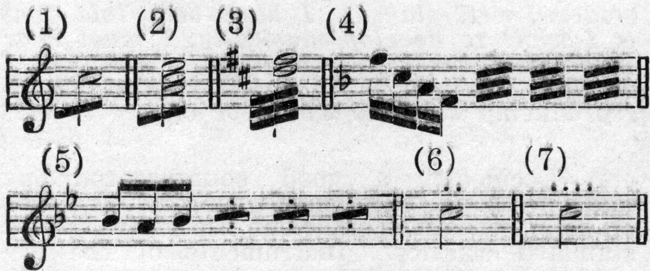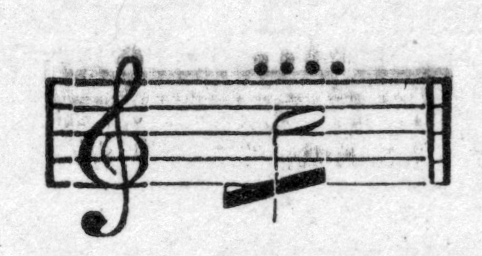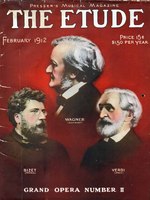Q. I am having an awful time with my fingers. In winter they crack open at the tips and commence to bleed. This is particularly the case when I have had much practicing to do. The doctors don’t seem to know what to do for them.—F. M. G. R.
A. Keep your hands always as warm as possible. For as much of the time as you can, keep the tips covered with vaseline. Wash the hands frequently in warm water, using Ichthyol soap. Ichthyol is a drug made from the fossilized remains of prehistoric fishes. It has a curative and antiseptic effect To soothe actual breaks in the skin, apply glycerine, and sprinkle with some surgical dusting powder, which may be obtained from any good druggist. When the breaks are healed, keep the finger-tips soft by massage or gently pressing the fingers of one hand with another. Wear old gloves at night, with plenty of vaseline or cold cream. If this treatment does not cause improvement within a month, consult a specialist.
Q. Whom would you class as the leading romantic composers?—Z. F. de M.
A. There are two schools of romanticism, one dealing with opera and the other with music in a more general sense. In opera, Weber was the pioneer and the greatest composer of the school. When his Der Freischütz came out, it founded the romantic school in triumph. The characteristics of the school Were chiefly the use of folk-music effects in the score and a choice of romantic subjects, often Teutonic legends. Spohr’s friends claim that he founded the school, because he wrote somewhat in this style before Weber. But Spohr’s operas were very chromatic and hardly popular enough to be held as founding the school. Marschner was Weber’s chief follower, and both influenced Wagner. Kreutzer and Lortzing worked partly in a delightful vein of comedy. In the more general field the word romantic is used in contrast with classic. This is an unfortunate custom, as many classical works are romantic (moonlight sonata, etc.), while many romantic works have become classics or models. Mendelssohn had romantic leanings, but Schumann was the great leader in this school. The school places more emphasis on emotion than on intellect or form in music. Thus Chopin, Liszt, Grieg and many others of their time were romantic composers. In a way, all the great modern composers except Brahms were romantic, as the early works of Strauss will prove. But the program style of intellectual story-telling superseded the so-called romantic school.
Q. Do other instruments than the violin produce harmonics?—New Reader.
A. Almost all instruments produce harmonics. The stringed instruments of the violin type all give harmonics in the same way though they are hard to get on the thick strings of the contrabass. The first harmonic is used on the harp, the player touching the string in the middle. As harmonics come from the motion of the vibrating substance in equal parts, it follows that air-columns may subdivide as well as strings. The upper tones of the woodwind are really harmonics, and the different registers of the flute and the clarinet depend upon this. The different quality between high and low notes is especially marked on the clarinet. The brass instruments go well up into the harmonic series. Very few of them have the fundamental notes, for which the air-column vibrates as a whole, though the so-called pedal tones may be obtained on the trombone or deeper instruments. The higher tones that blend with the chief note of a bell or gong are called by-tones instead of harmonics, because the vibrating material does not divide into equal parts.
But, as we presume that “New Reader” refers to string harmonics, we can sum up the matter by saying that harmonics are producible from all strings, but easiest on thin strings. The harp producing only a single harmonic, while Paganini, with thin violin strings, was able to reach the twelfth harmonic. The viol d’amour has especially sweet harmonics, and the sweetness of the harp harmonic is also noticeable.
Q. Why is it so many singers pronounce the word “wind” and the words “either” and “neither” with the long sound of “i?”— Friend in South America.
A. They use this pronunciation because it is much easier to sing than the short sound of “i” or the long “e,” especially upon a high note. Long “i” is a compound vowel, sounding like “ah” and “ee” together, and the first of these two is the easiest vowel sound for the singer. The rule of the best American vocal teachers is to pronounce the word as “wihnd” only when a rhyme is made by it. as, for example:
“‘Twas but the moaning Of the wind,
On With the dance, let joy be uncohfined.”
Also if there is long vocalization or a sustained high note upon the word it may be lengthened into “wihnd.” Under all other circumstances it will be better to pronounce the word with the short “i” sound. To sing “the wihnd blows fresh and free” would be very affected. The phonetic effect must not be disregarded however. If one took the line, “the wind howled dismally,” it is possible that the long sound might be effective but in a crisp snappy passage the long vowel would be entirely out of place.
On account of the ugly combination of vowels and consonants, most vocal teachers pronounce “either” and “neither” with a long vowel sound.
Q. Is dancing older than music?—QUESTION Mark.
A. This is almost as bad as deciding which came first, the hen or the egg. It depends a little on what will be accepted as music. Primitive man could certainly indulge in various cries imitative or signaling. But in the days when the mammoth and other beasts of antiquity roamed about in the territory that is now London or Paris, music was somewhat of a luxury, while rapid motion was often an absolute necessity. The dance must have developed first and the melodic sense later, perhaps in connection with it. Many savage tribes of to-day are well advanced in both music and dancing. But in the most primitive of these tribes, the Australian type that most resembles the animal kingdom, we find the dance much further advanced than music.
Q. I have always been mixed upon musical notation abbreviations similar to the following. Will you kindly discuss this matter in your column so that I may have something to go by?

How are the above played?—B. J. D.
A. In the first example C is played in repeated eighth notes to the value of a half note—that is, four times. In the second example the chord is repeated, being played four times as in example 1. In the third case the two-note chord is played sixteen times as if repeated in thirty-second notes. The mark on the stem (or above a whole note) shows the denomination of note to be used, while the printed note shows how much of the measure must be filled up with the repeated notes. In examples 4 and 5 the marks indicate that the group played on the first beat (as printed) must be repeated for each other beat of the measure. Examples 6 and 7, with the dots, are given wrongly. It should be:

in the last example and means four staccato eighth notes. Example 6 should be written in simpler notation, as two quarter notes played staccato.
Q. Does practice on the parlor organ injure one’s piano technic? (N. F. G.)
A. Not in the least. Some teachers think that such work on a small organ will injure the piano touch, but it should rather be a benefit, for it teaches the player an excellent legato. It eliminates shading by strength of fingers, etc., but that does no positive harm if piano practice can be kept up at the same time. I have known of more than one great piano teacher grow enthusiastic over the benefits derived from organ practice. But parlor organ practice should not be kept up as steadily as piano practice. It is a physiological fact that the reed organ excites the nerves, if played very long at a time.



